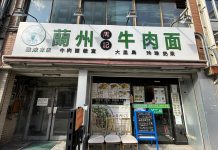
Watching a sumo match at Osaka’s Sumo Tournament is a quintessential Japanese experience that is unforgettable. Firstly, the sheer athletic feat of two Goliath-like humans wrestling is something to behold. Secondly, the whole atmosphere of the arena erupts into a frenzy. The tightly packed stadiums, with the front row just a few metres from the centre stage, make an electric atmosphere.
Table of Contents
What is Osaka’s Sumo Tournament?
Every year, for two weeks in March, one of the biggest sumo wrestling events takes place in Osaka. There are a total of six official professional sumo tournaments throughout the year, called honbasho in Japanese. This term is to distinguish the difference between other unofficial tournaments. At the official tournaments, there is a cash prize as well as a chance for the sumo wrestlers to increase their ranking. However, at unofficial tournaments, there is no impact on their ranking.
The six honbasho are:
January (Hatsubasho) – Tokyo, Ryogoku Kokugikan
March (Harubasho) – Osaka, Osaka Prefectural Gymnasium
May (Natsubasho) – Tokyo, Ryogoku Kokugikan
July (Nagoyabasho) – Nagoya, Aichi Prefecturial Gymnasium
September (Akibasho) – Tokyo, Ryogoku Kokugikan
November (Kyushubasho) – Fukuoka, Fukuoka Kokusai Center
The honbasho lasts for 15 days, with the sumo wrestlers ranked in the top two divisions (Makiuchi and jūryō) wrestling once each day. The sumo wrestlers in the lower divisions wrestle around seven times, once every alternate day. The main goal for the sumo wrestlers is to achieve enough wins to gain entry to the next tournament. In each division, there is a prize for the wrestler with the most wins and an overall trophy (Emperor’s Cup) for the winner of the tournament.
Although there is no fixed matching system, for the first half of the tournament, the highest ranked wrestlers will pair against the lowest ranked wrestlers. The second half of the tournament sees the highest rank sumo wrestlers competing amongst each other, with the remainder of the ranks determined by their win-loss records up to that point.

What is Sumo Wrestling?
Sumo wrestling is a clash between two wrestlers, with the first to knock down or push out the opponent winning. The bout takes place in a clay ring or Dohyo in Japanese. Historically, the aim was to throw one’s opponent but the rules adapted and changed according to the times. However, now the goal is to push the opponent outside of the sand covered circle and to get off balance so they fall and touch the ground with a body part other than the foot. Whilst there is no time limit, most matches usually last less than one minute and sometimes just a few seconds.
To win, wrestlers can do pretty much anything in the ring to win, from slapping, tackling and tripping their opponent. However, they can not punch, poke sensitive areas or pull hair. Furthermore, if a wrestler’s loincloth happens to come off, they are immediately disqualified. It may seem like a simple sport but there are actually over eighty two winning techniques that a wrestler can use, called kimarite.
Suma has no weight or height classes so there are often mismatches. The average weight of the first division wrestlers is around 150-160kg with the all-time heaviest sumo wrestler, Anatoly Mikhakhanov, weighing a staggering 288kg! However, sumo wrestling is much more than just weight and size. Speed, agility and experience play a big factor.

History of Sumo Wrestling
Sumo Wrestling dates back over 1,500 years ago. Ancient paintings and drawings show that it was performed as a part of agricultural rituals for gods to determine the success of the year’s harvest. Tradition states that sumo wrestlers from different farming villages split into two groups to wrestle. The winning group would gain favour from the gods and receive a more bountiful harvest. Other paintings also show that it sumo was part of Imperial court ceremonies in the 7th and 8th centuries. Although there are different chores about its origin, people say that sumo was traditionally a dance and ritual with prayers following the Shinto movement.
In 1192, a military dictatorship in Kamakura had a positive effect on the development of Sumo. People thought it allowed fighters to gain more fighting power. Furthermore, during the Edo Period (1603-1868), Japan’s trade was thriving, which led to Sumo becoming a form of entertainment. It became regulated with tournaments being held to fund shrines and temples. However in 1868, the Meiji restoration saw a westernization of Japan and thus a shift in sponsors. This resulted in the decline of sumo wrestling. In an attempt to restore the sport, the Meiji-Tennou organised a sumo tournament in 1884. It was to show the importance of culture, tradition and heritage of the sport.
Following the popularity of the tournament, the Japanese Sumo Association started. They decided to increase the number of tournaments to four a year and then to six in 1958. Now, it is hugely popular with locals and people around the world. Sumo is becoming more internationally recognised with the likes of the U.S, Mongolia and Argentina producing sumo wrestlers. In addition, there is now female sumo wrestling, showing the expansion of the historic sport.
Shinto in Sumo Wrestling
As sumo has changed and adapted over the centuries, it has still kept the Shinto aspects it once had. Wrestlers sip sacred water and throw salt into the ring to purify it before the match. Furthermore, the referees dress like Shinto priests with a Shinto shrine hanging over the ring. Finally, when they enter the ring, they clap their hands to summon the gods. You may also be wondering about their hairstyle? Many of the ancient paintings show slicked hair tied at the back, which is still in present times, to honour the ancient sport.

Buying Tickets for Osaka’s Sumo Tournament
There are a few ways of buying tickets to the Osaka’s sumo tournament, as wells as others around Japan.
Ticket Oosumo
Using the Ticket Oosumo English website, you can easily purchase tickets online. This is the easiest and most reliable way to get tickets for the sumo tournament so it is highly recommended. After purchasing the tickets, you can collect them at the stadium on the day of the tournament. They will send an email containing your ticket number. At the stadium go to the ticket machine and enter this number (or the credit card number you used to purchase your ticket) and it will print it out for you.
The best seats are on the located right infant of the stage, called the shomen (ringside). As you get further away from the stage, the prices of the tickets become cheaper. Ringside tickets usually cost around ¥20,000 and general admission tickets typically cost around ¥2,500.
Ticket Shops
Throughout Japan, there are various ticket shops where you can purchase the Sumo Tournament tickets but the recommended sho pis Ticket Pia. In some cases, there may be queues forming outside so it is best to get there early. The staff will give you a form requiring the event you want to go to and some personal details. It is common for the shop to sell out of tickets so be careful. If this is your only method of buying a ticket, then it’s best to get there as early as possible!
On the Day Tickets
If you are unable to purchase the tickets online or at a store, there are a limited amount of tickets sold on the day. There are just a few hundred and are for general seating, not the more expensive box seats. These seats are not reserved so you can sit wherever you like in the section. When lining up, a staff member will hand you a small number ticket (seiriken), telling you a little about the ticket guidelines. You must stay in line to buy your tickets so don’t walk away. At the counter, you can purchase a general ticket (one ticket per person), which costs ¥2,100 for adults and ¥200 for children. Children below the age of 4 do not need a ticket. In addition, it is cash only!

How to Enjoy Osaka’s Sumo Tournament
Gates open from 8:30 am but the action starts in the early afternoon. If you are looking to buy a ticket on the day, then it’s best to get to the stadium when the gates open or even before. Once you have secured your ticket, you can hang around in the arena, or wonder around Osaka a little bit until the action starts. The lower ranked sumo wrestlers begin proceedings. Then from 3:30pm, the higher rank wrestlers enter the arena and usually finished around 6pm. During idling time, there are plenty of opportunities for photo taking, with spectacular views of the dohyo (ring) with the shinto shrine hanging from above.
There are a few ceremonies throughout the day to introduce the sumo wrestlers and begin proceedings. The first is the dohyo-iri, or ring ceremony. This is performed by the top two division wrestlers, Makiuchi and jūryō. They are split into two groups – East and West. Each group takes turn entering the ring, presenting themselves. The lower ranked wrestlers enter first with the highest at the end. They are introduced one by one and at the end, they all face each other in a circle. After clapping their hands once, they raise their right hand, then lift their kesho-mawashi (decorative aprons created for the ring ceremony). Finally, they lift both hands in unison. This is to honour the samurai era, where it was shown that they were holding no weapons or armour. At the last fight of the day, a bow twirling ceremony is performed bu the Makushita– ranked wrestlers.
There is not much else to do in the arena, however it is in the hub of entertainment, Namba. You can enjoy the surrounding area, which is full of restaurants, izakayas and shops.

Osaka Prefectural Gymnasium (EDION Arena)
The Osaka Prefectural Gymnasium, often referred to as the EDION arena, is a multi-purpose sports hall located in Namba, Osaka. It first opened in 1952 and underwent renovations, with the current building constructed in 1987. The gymnasiums has various arenas, dojos and courts for sports such as tennis and badminton. Furthermore, there are several conference rooms and multi-purpose halls.
In 2020, the sumo tournament in Osaka restricted any spectators due to COVID-19. This was the first time in the sport’s history that there were no spectators. Furthermore, in 2021, the tournament was moved to Tokyo. Luckily, the 2022 tournament in Osaka is to go ahead with tickets slightly limited as precautions against spreading COVID-19.
Access
5-minute walk from Namba Station on the Osaka Metro Midosuji Line and Nankai Railway
Address: 〒 556-0011 3-4-36 Nambanaka, Naniwa-ku, Osaka
Tel: 06-6631-0121
Web: https://furitutaiikukaikan.ne.jp/
Watch a video on Osaka’s Sumo Tournament here:
Final
Sumo wrestling dates back centuries ago and is rich with history, culture and tradition. It is much more than a sport but a way of life and is a fascinating insight into Japanese culture. Whether it’s the premium ringside seats or the general seating at the back, the atmosphere and spectacle is so unique, it is well worth watching.
























